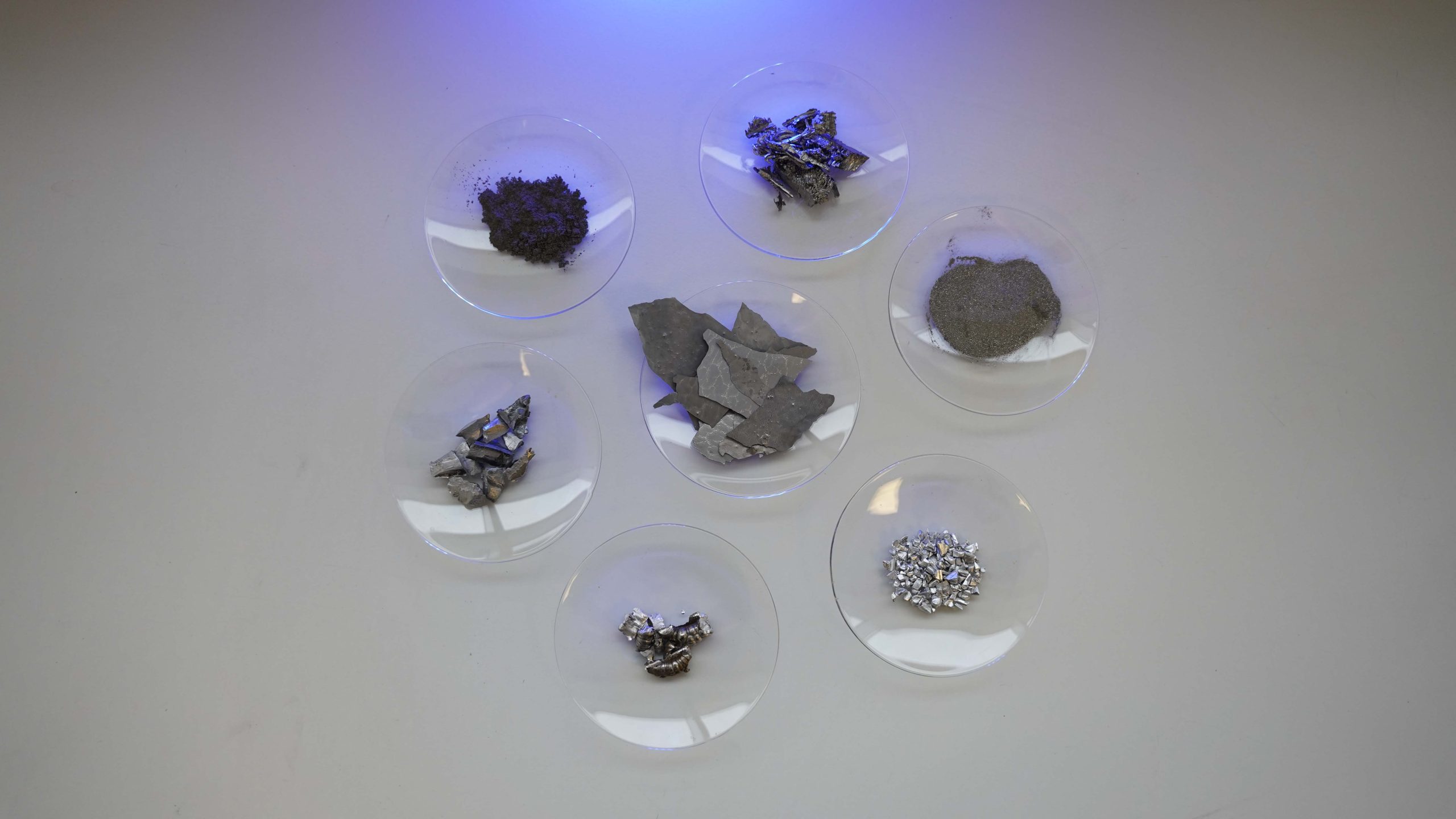To kick the year off, we’ve collated 9 frequently asked questions from 2024 in hope to help with some queries, both technical and educational.
- What is praseodymium (Pr) used for in everyday life?
While praseodymium might not be directly visible in everyday items, its presence in various components significantly contributes to the functionality and efficiency of numerous products we use daily. Think about the mobile phone in your hand or the refrigerator in your kitchen keeping your food fresh. Praseodymium is a crucial element and many of us don’t even know it.
Household appliances
Pr containing magnets are used in the motors of various household appliances:
- Refrigerators
- Vacuum cleaners
- Washing machines
- Air conditioning
- Power tools
Glass and ceramics
Pr is used to add colour to ceramic glazes and glass, enhancing the aesthetic appeal of everyday tableware and cookware.
Small portable devices
Pr is used in combination with neodymium to create strong NdFeB magnets. These magnets are found in various everyday devices:
- Smartphones
- Headphones
- Speakers
Automotive
Pr is used in catalytic converters in cars, helping to reduce harmful emissions by converting exhaust gases into less harmful substances.
It is also used in nickel-metal hydride (NIMH) batteries which are found in hybrid vehicles.
2. Does titanium rust?
Technically, titanium does not rust in the same way that iron does. When iron rusts, it forms iron oxide, a flaky and often red substance that weakens the metal over time. However, titanium is highly resistant to corrosion due to its protective oxide layer.
This layer forms when titanium is exposed to oxygen, creating a barrier that prevents further oxidation. While titanium can still undergo corrosion under extreme conditions, it is highly resistant compared to many other metals.
3. Is gallium magnetic?
No, gallium is not inherently magnetic.
It’s a metal that is known for its low melting point and its ability to form alloys with other metals. While it does interact with magnetic fields, it doesn’t retain magnetism once the field is removed.
4. What is a scandium alloy?
Scandium alloys are metallic materials that contain scandium as one of their components.
Scandium is a rare earth metal that, when added to other metals, particularly aluminium, significantly enhances their properties. These enhancements can include increased strength, improved weldability, enhanced corrosion resistance, and better performance at high temperatures.
Application areas are aerospace, automotive, military / defence and high-performance sports equipment.
5. Can nickel be made into a permanent magnet?
Nickel can indeed be made into a permanent magnet. It is one of the ferromagnetic materials, along with iron and cobalt, that can be magnetised.
In its pure form, nickel has magnetic properties, but these properties are not as strong as those of iron. When nickel is combined with other elements, such as in alloys, its magnetic properties can be enhanced.
6. What are neodymium iron boron (NdFeB) properties?
NdFeB magnets are the most widely used type of rare earth magnets. They exhibit a combination of properties that make them extremely powerful and useful in various applications.
Magnetic properties:
- High magnetic strength – they have the highest magnetic energy product among all permanent magnets.
- High remanence – they can retain a large fraction of their magnetisation after being magnetised.
- High coercivity – they can resist demagnetisation from external magnetic fields.
7. How are NdFeB magnets made?
The raw material is heated in an induction furnace melted and cast to give the alloy material.
Once cooled, the alloy is crushed and milled to create a coarse granular powder. The powder is then jet-milled to a fine size and pressed in a magnetic field to orientate the particles.
After being pressed into their desired form, the compacts are sintered to full density, coated (if required) and then finally magnetised.
8. What is co-reduction?
Samarium cobalt (SmCo) alloy powders are a type of rare earth magnet material. They are produced through a process called co-reduction, which involves the reaction of mixed oxide with a reductant metal at elevated temperatures by induction melting. The resulting alloy is then crushed and milled to produce a fine powder with particle sizes typically 500 microns and below.
The co-reduction process involves heating the mixed oxide and reductant metal together until they melt and react, forming the desired SmCo alloy. The molten alloy is then cooled and solidified, after which it is crushed and milled to produce the powder.
LCM is one of a few manufacturers globally producing SmCo alloy powders using the solid-state co-reduction process. This process involves the diffusion of atoms through the solid state, resulting in the formation of the desired alloy. The co-reduction process is advantageous because it produces a more homogeneous and fine-grained powder than other methods, resulting in improved magnetic properties and performance in the final magnet product.
9. What is hydriding?
The hydriding process, also known as hydrogen decrepitation, is a technique used primarily to break down and prepare certain magnetic alloys, like neodymium iron boron (NdFeB), for further processing and milling. The process is conducted at LCM in 300kg batches.
Have we missed anything? Drop us a question below for our next FAQ blog!


Leave a Reply